MassDOT 93 Fast14 Project Overview, Lessons Learned, Program Direction & Economic Analysis
slide 1: MassDOT 93 Fast14 Project Overview, Lessons Learned, Program Direction & Economic Analysis
Neil E. Boudreau
MassDOT State Traffic Engineer
June 5 & 6, 2012
Denver, CO
slide notes:
None
slide 2: MassDOT's I-93 Fast14
- Project Overview
- Traffic Impacts/Mitigation
- Lessons Learned
- Achievement of Goals
slide notes:
None
slide 3: Project Overview
- I-93 in Medford area constructed in early 60's
- Four travel lanes each direction – minimal shoulder width
- Processes 200,000 VPD
- Weekend hourly volumes still at 5,500 VPH in both directions during peaks
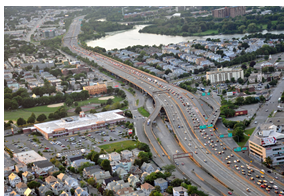
slide notes:
None
slide 4: August 2010
- A scheduled highway resurfacing project, started in 2008, exposed severely deteriorated bridge decks
- Old age, chloride intrusion, from snow & ice control, main contributor to degradation

slide notes:
The concrete decks are in poor condition with deteriorated concrete. In addition, the steel beams that support the deck are corroded and are painted with lead paint. Fortunately, the substructures (foundations and piers) are in good condition, needing only minor repairs.
slide 5:
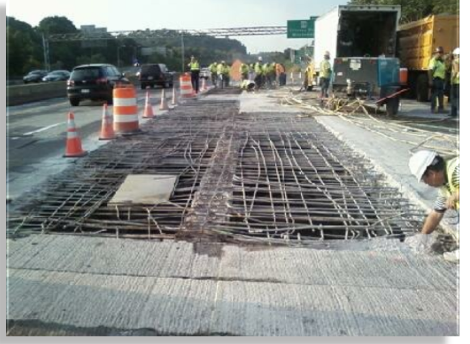
slide notes:
None
slide 6: Birth of a Project
- Valley Street failure underscored need for deck replacement project for entire corridor
- Traffic volumes preclude long term closures
- Concept started a month earlier
- Decision made, FIX THEM ALL IN SUMMER 2010
slide notes:
None
slide 7:
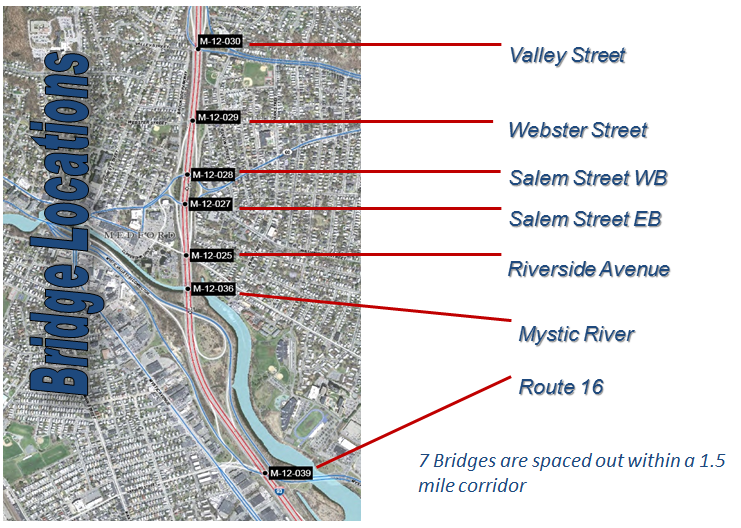
slide notes:
None
slide 8: Conventional Construction
- Multi stage – (possibly five)
- Minimum 4 years
- Worker safety issues
- Traffic splits
- Narrow travel lanes
- Loss of accel/decel lanes
- Concern over durability of the existing decks
slide notes:
None
slide 9: Project Approach
- Replace 14 deteriorated bridge superstructures over 10 weekends in June, July, August
- No Work on July 4th
- 2-weekends of float for weather/construction issues
- Use one side of I-93 to provide 2 lanes NB and SB over weekend

slide notes:
None
slide 10: Accelerated Bridge Construction
- Benefit of ABC on reducing the duration of construction and impacts on motorists
- Prefabricated steel beam & pre-cast deck panels
- Aggressive traffic management
- Innovative materials and construction methods
- Accelerated construction schedule

slide notes:
None
slide 11: Procurement Method – Design Build
- Method shortens schedule – Construction & Design occurring simultaneously
- Risk of design is distributed to contractor who hires consultant to complete design from 25% level. Contractor owns the design.
- Incentive/Disincentive used to push schedule and reward acceleration and penalize delays.
- Project initiated in August 2010, RFP out in late October and NTP issued on Feb. 7, 2011. All bridge/highway work complete: Nov. 2011
slide notes:
None
slide 12: The Construction Plan
- 14 bridge superstructures in ten weekends
- 252 modular units
- 18 for a three span bridge (6 across)
- Rapid strength gain concrete for 32" closure pour between units
- Minimize pick weights – cast parapet walls in-place after deck complete

slide notes:
None
slide 13: Preparation Work
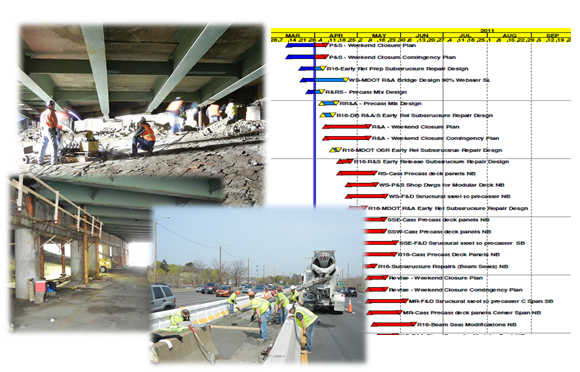
slide notes:
None
slide 14: Sub-Structure Repair Work
- De-lead, shore, jack and cope 684 beam-ends to provide access for beam seat work
- Prep & pour 1008 beam seats total
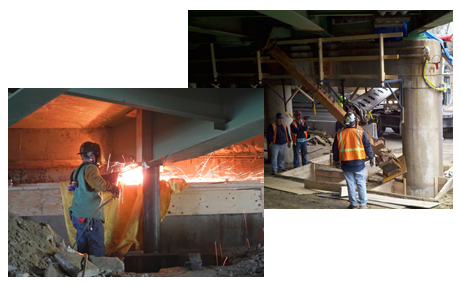
slide notes:
None
slide 15: Fabrication of Modular Units
- 252 Modular units cast in New Jersey, transported to MA
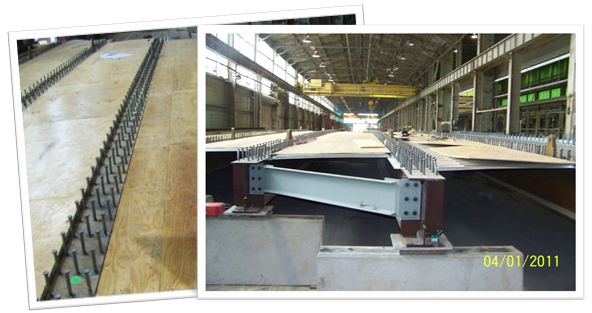
slide notes:
None
slide 16: Precast Lifting Exercise
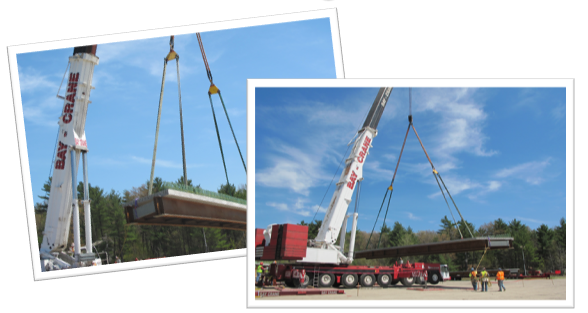
slide notes:
None
slide 17: Dry Runs & After Action Reviews
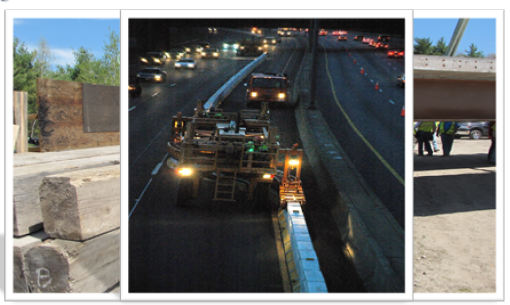
slide notes:
None
slide 18: Traffic Outreach Goals
- Manage Interstate Traffic with half the capacity each weekend
- Encourage diversion to alternate routes through providing real-time travel time information
- Monitor alternate routes to ensure that capacity is available
- Communicate work schedule to the public effectively
- Make safety a priority
slide notes:
None
slide 19: Existing Traffic Volumes
- Evaluation of historical I-93 summer count data to determine the possible impact for dropping two lanes on a 4-lane interstate highway
- Reducing a four lane section to a two lane section is expected to have a capacity of approximately 2,960 vehicles per hour
- I-93 weekend traffic volumes for the highest hours of the day are still up in the 5,500 vehicles per hour range in both directions
- Encourage diversion and use other regional roadways, Route 128/95, I-495, I-90 and Route 1
- The primary local detour route, Fellsway/Route 28 carries between 700 to 1,800 vehicles per hour on Saturdays and Sundays
- Impacts expected on other regional facilities, Route 16, Route 38 and Route 60 expected
slide notes:
None
slide 20: Goal: Traffic Diversions
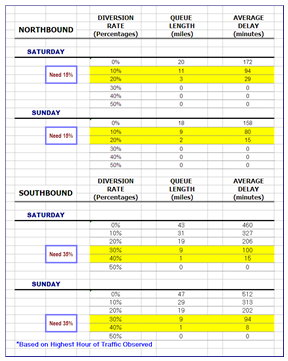
|
Need Minimum of 15% traffic diversion Northbound on I-93 Need Minimum of 35% traffic diversion Southbound on I-93 |
slide notes:
Work zone traffic analysis (info on tools and results) performed during the planning/design stage
slide 21: So how do we do it?
slide notes:
None
slide 22: Traffic Management Approach
- Provide for safe and efficient maintenance of traffic on all roadways in project area.
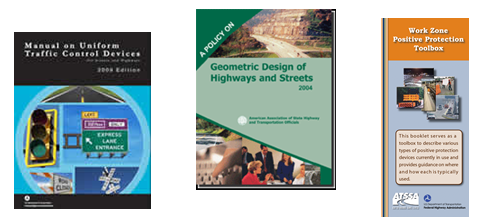
slide notes:
Approach to Traffic Management to maximize safety
slide 23: Use of Movable Barrier
- The need for positive protection to run counter-flow traffic and still be efficient to deploy, led MassDOT to the "Quick Change" barrier system.

slide notes:
Use of Zipper Barrier to manage interstate traffic
slide 24: Crossover Design Considerations
- Requirement that crossover be configured for a 65 mph design speed
- Including shifting tapers and curve radii
- Not designed for super-elevation (weekend closures only)
- Minimize conflicts with other roadway elements (i.e., bridge piers, interchanges, sign bridges, etc...)
slide notes:
Cross-over design considerations
slide 25: Barrier Configuration
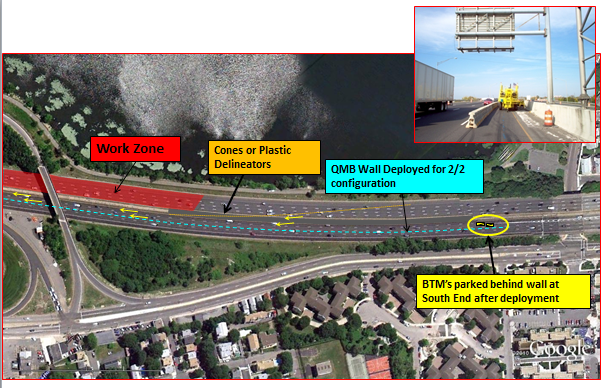
slide notes:
None
slide 26: Movable Barrier Deployment
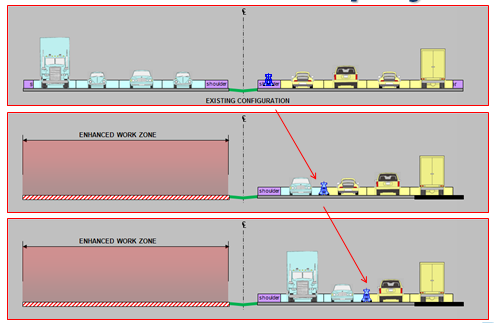
slide notes:
Any specifics on traffic operation strategies and demand management strategies to minimize traffic impacts
slide 27: I-93 Crossover TMP

slide notes:
I-93 is restricted to two-lanes each direction starting Friday night at 8 PM till 5 AM Monday (the latest)
All On and Off-Ramps on the active side of the highway remain open
One travel lane will be provided for local access to ramps on the closed side where possible
slide 28: Work Zone Speed Limit
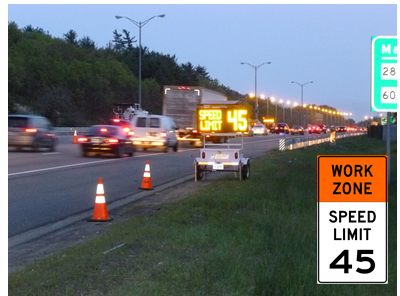
slide notes:
None
slide 29: Work Area Protection
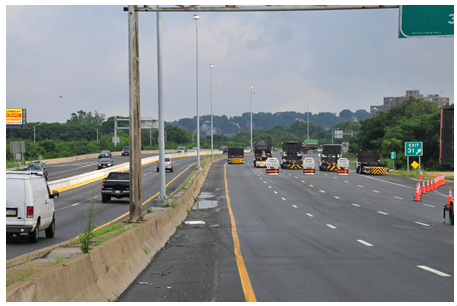
slide notes:
Managing Detours to lessen driver confusion.
slide 30:
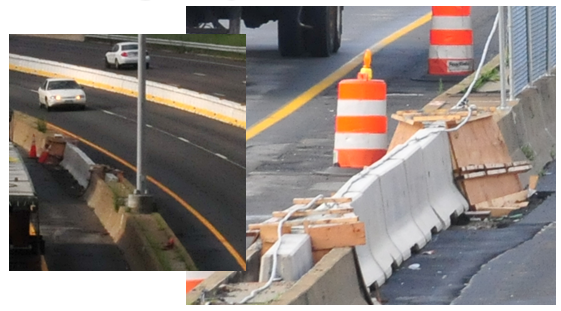
slide notes:
Local Traffic Management Approach
slide 31: Fellsway Traffic Plan
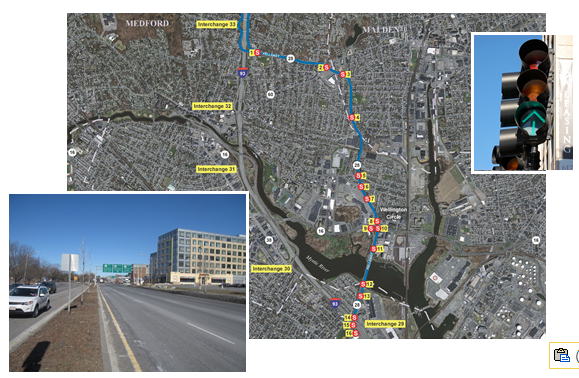
slide notes:
Route 28/Fellsway will serve as the primary local access detour route and a Traffic Signal Progression timing plan added to each location.
Route 16 (Mystic Valley Parkway), Route 38 (Mystic Avenue), Route 60 (Salem Street) and Riverside Avenue provide alternate detour travel routes
slide 32: Fellsway Operations Plan: I-93 Traffic Composition
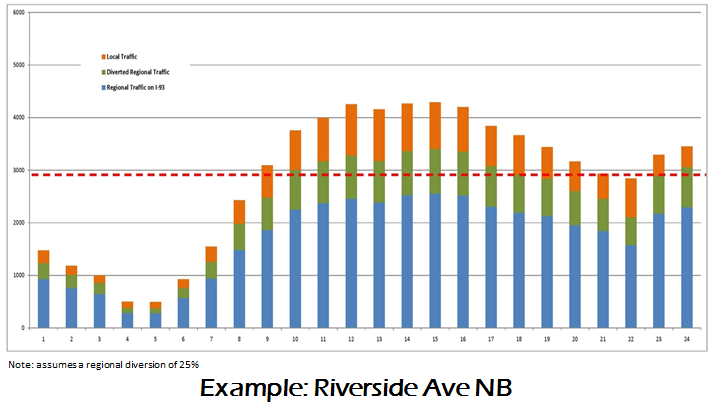
slide notes:
Example of how I-93 traffic can be accommodated within the reduced two-lane crossover by taking out the diverted regional traffic, destined to the Fellsway and showing the level of local O&D traffic. The key is the operation of the Fellsway
.slide 33: Local Detour Routes
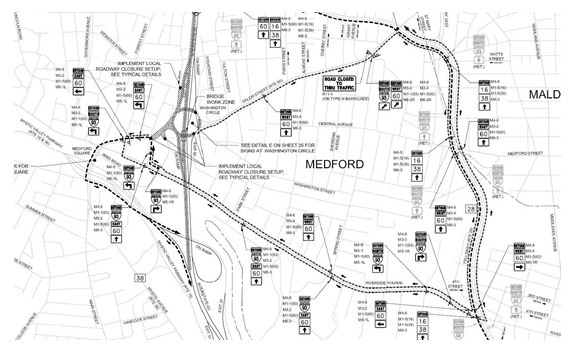
slide notes:
All local detour routes were presented to the local communities for review early in the process to ensure that we had full support and buy-in for the plans. We needed to provide multiple routes to address directional flow and spread out the volume impacts.
slide 34: Local Detour Routes
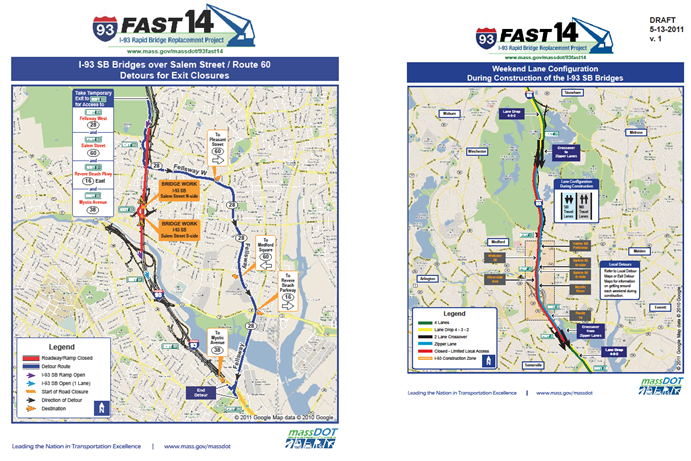
slide notes:
None
slide 35: Incident Command Structure
- From early on in the process the decision was made to plan the Fast 14 traffic management operations as if the weekend schedule is an "incident" and utilize the Incident Command Structure according to the National Incident Management System (NIMS)
- NIMS provides a systematic, proactive approach to guide departments and agencies at all levels of government, in the management of incidents
slide notes:
Any specifics on traffic operation strategies and demand management strategies to minimize traffic impacts
slide 36: Mobile Command Center
The Massachusetts State Police have a mobile "command center" that will serve as the focal point of communications between work zone traffic details, intersection control, construction operations, local police/fire and regional EMS.
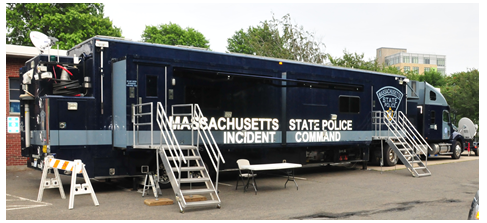
slide notes:
Any specifics on traffic operation strategies and demand management strategies to minimize traffic impacts
slide 37: Active Command Post
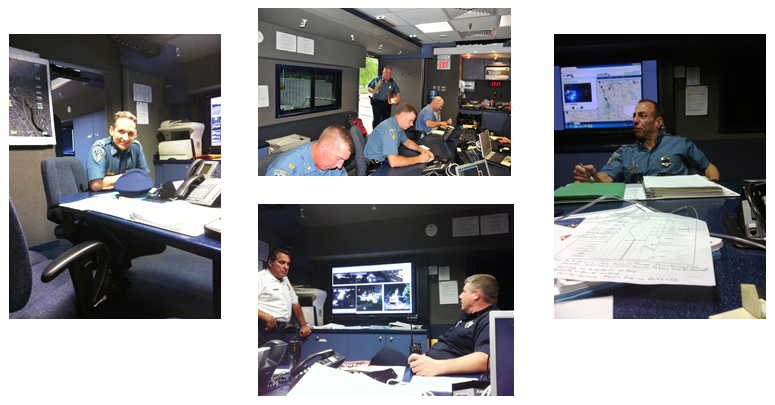
slide notes:
None
slide 38: Real-Time Traffic Management
- 35 Portable Changeable Message Signs (PCMS)
- 4 Portable Camera Trailers
- 67 Traffic Sensor Trailers
- 3 Blue Tooth Sensors
- ASTI's "CHIPS" Program (Operating System)
slide notes:
Computerized Highway Information Processing System
BlueTOAD
Bluetooth Travel-time Origin And Destination
Advanced System BlueTOAD™ is the most advanced traffic-monitoring system on the market, directly measuring travel times using cost-effective, non-intrusive roadside technology.
slide 39: RTTM System Main Screen
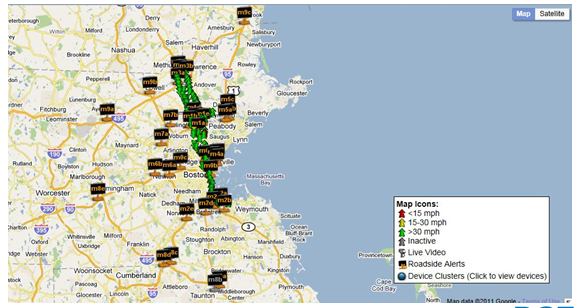
slide notes:
None.
slide 40: RTTM System
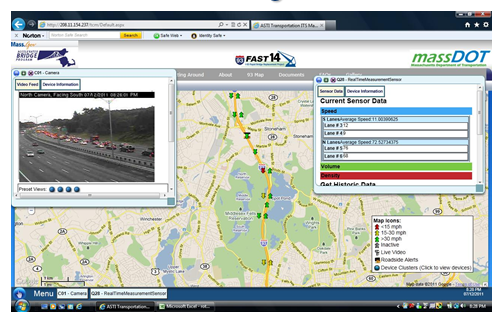
slide notes:
None.
slide 41: Night Time Coverage
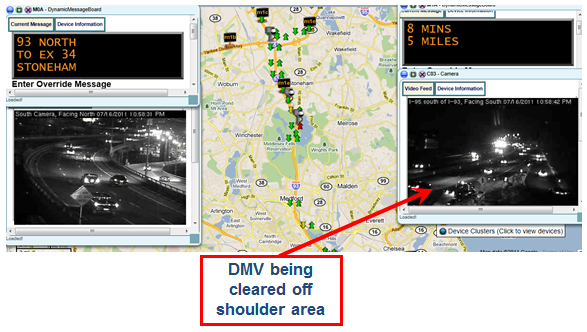
slide notes:
None.
slide 42: Video Wall at Command Post
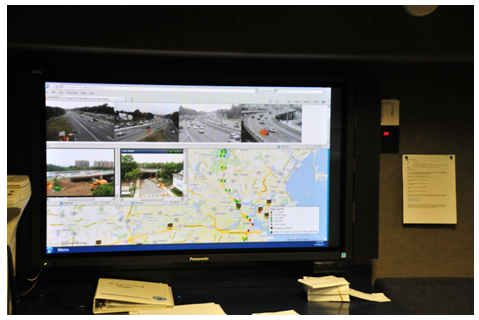
slide notes:
None.
slide 43: Field Office Operations Center
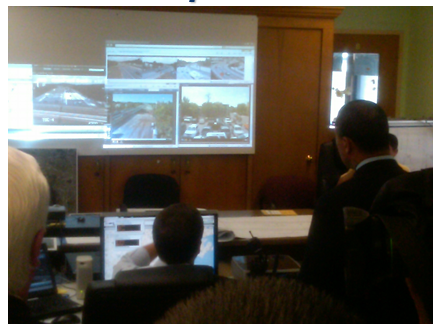
slide notes:
Local Access Lane on I-93: capacity versus worker safety.
slide 44: Massachusetts Interagency Video Information System
- MIVIS – Provides Remote Camera Access
- Screen Shot from 1 of 6 new cameras in corridor
- All password protected
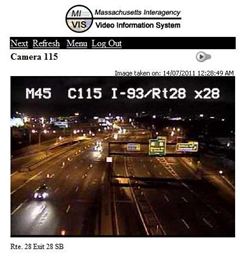
slide notes:
None.
slide 45: EarthCam – Contingency Assist
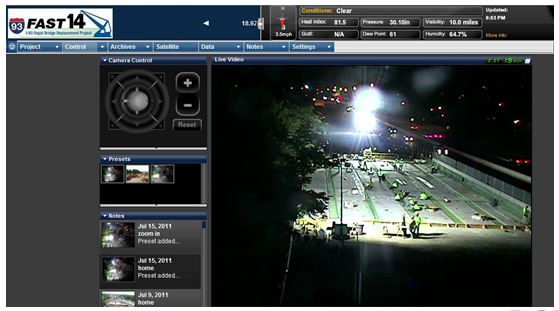
slide notes:
None.
slide 46: 511 Construction Updates
- Partnering with our 511 provider Sendza we had over 1,100 users of the dedicated I-93 Fast 14 Construction Alerts
- Saturday, July 30th – General Message
"MassDOT- Medford I93 reduced to 2 lanes each dir – NB Ramps open, SB to Ex 33 only. Local access via Rt 28. Expect traffic delays/plan extra time/use alt rtes" - Voice over – In addition to the traditional text messages that we send Sendza, we also prepare and send a local roadway detour plan
slide notes:
None.
slide 47: Highway Advisory Radio
- MassDOT deployed six HAR units approaching key alternate routes
- Message sets were drafted for eight different traffic scenarios based on varying delay thresholds
slide notes:
None.
slide 48: MassDOT Maintenance Support
- District 4 Maintenance has provided the Fast 14 project with on-call traffic operations needs, general highway maintenance and work zone traffic control
- Weekly deployment PCMS boards to support the local detour routes
- Without the support of the Highway Maintenance Team, MassDOT would have had a very difficult time managing the weekend schedule
slide notes:
None.
slide 49: MassDOT Maintenance Support
- Each week the HOC supports the Fast 14 project with schedule/traffic advisories for the next weekend's bridge (Mon-Fri)
- During the weekend, the HOC provides 7-10 site specific messages
- Two-way communications Using 800 MHz radios
slide notes:
None.
slide 50: Highway Operations Center Support
- Project team held 4 meetings with 16 local Police Departments as a part of the process in developing the Contingency Plan and Incident Action Plan.
- Team also conducted one big regional meeting with Armstrong Ambulance that included several other regional companies. In addition, there were coordination meetings with representatives from both Boston EMS and Massachusetts General Hospital (MGH).
- The MSP Truck Team Commander held several discussions with the MSP Truck Team, Coady's and DEP to ensure that an agreement on an expedited version of the HazMat cleanup protocol was reached.
- MSP Troop A worked with the Accident Recon Team (CARS) to develop an expedited accident reconstruction protocol to ensure a very quick cleanup and clearance for any accident involving a serious injury or fatality occurring within the Fast 14 Project boundary
slide notes:
None.
slide 51: State Police Emergency Response Teams
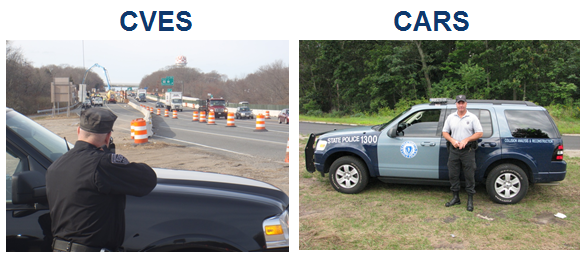
slide notes:
None.
slide 52: On-Site Tow Services
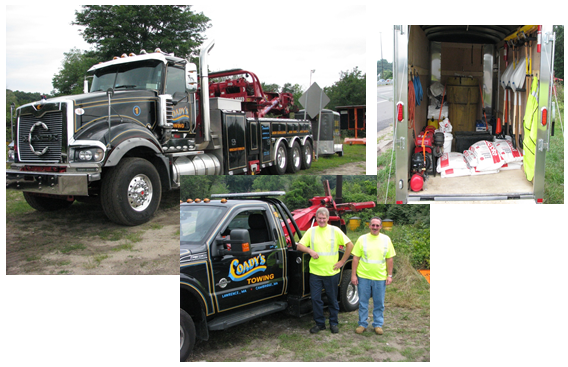
slide notes:
None.
slide 53: Motorist Assistance Vans
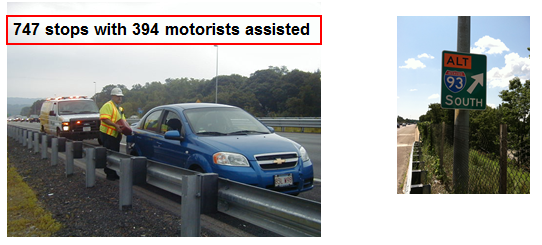
slide notes:
None.
slide 54: Public Transportation
- Anderson RTC – People were encouraged to take advantage of the free parking
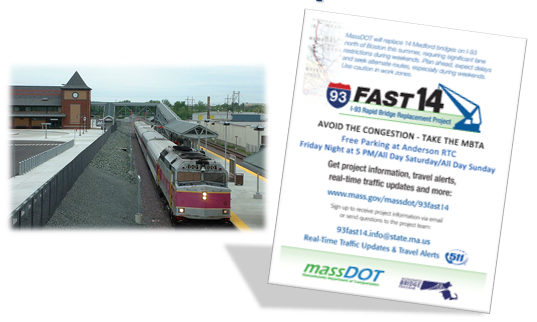
slide notes:
None.
slide 55: Bus Route Changes
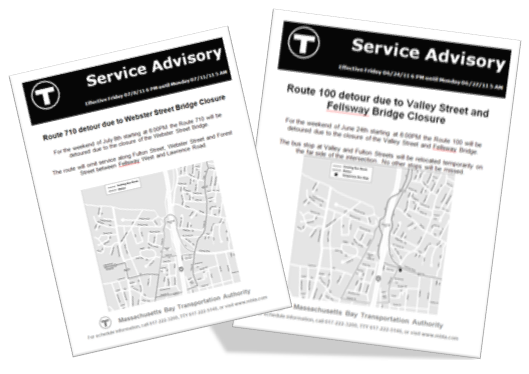
slide notes:
None.
slide 56: Lessons Learned
- Involve key decision makers from the start
- Aggressive schedule requires organization
- Co-locate with Design-Build contractor
- Form discipline-based working groups
- Work with locals regarding impacts / expectations
- Engage law enforcement early
- Develop/exercise contingency plans
- Use any and all communication methods
- Practice key work activities
- Two-way radio communication
- Adjust methods to improve efficiency
slide notes:
None.
slide 57: Achievement of Project Goals
- Managed interstate traffic without long queues/excessive delays
- Kept local detour routes moving with acceptable levels of delay
- Protected workers from hazards of the work zone/highway
- Avoided serious crashes in TMP
slide notes:
None.
slide 58: Fast 14 Traffic Observations
- Traffic on I-93 averaged speeds of 35 mph through the work zone, with lower speeds entering the lane drop areas (15-20 mph) and higher speeds inside the movable barrier lanes (40- 45-mph).
- Local detour routes maintained an average speed of 25-mph and delays were kept to and average of 2-3 cycles at key intersections.
slide notes:
None.
slide 59: RTTM Weekend Data
Weekend 10 Speed Plot Data: I-93 Southbound over Route 16 (Mystic Valley Parkway) August 12-14

Traffic volumes exceed capacity of the lane and speed drop to a crawl for periods of the day.
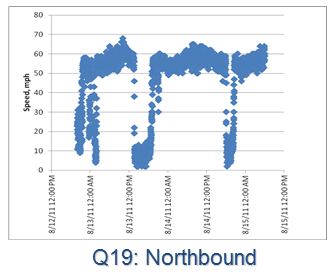
slide notes:
Station 29 is South of Exit 35 Winchester Highlands on I-93 SB and Station 19 is in the south of Exit 28 on I-93 NB. The crossover has traffic in the NB barrel and we experienced traffic backups throughout the daytime in the NB direction due to the friction caused by the on-off ramps for Exits 29, 31, 32 and 33. Southbound the slowdowns are minimal and appear to be contained within the crossover section.
slide 60: Project Crash History
- Between June 3rd and August 15th, there has been a total of 348 Motor Vehicle Accidents (MVAs) on I-93 within the TMP limits
- 144 of those MVAs actually occurred during the 55-hour construction window over the ten weekends of work I-93(No work on 4th of July Weekend)
- 55 of 144 were Paper Exchanges = not reportable
- A total of 35 Disabled Motor Vehicles have been cleared during the 55-hr schedule
slide notes:
Current Crash History – Make note that the totals include any activity that happened during the July 1-4 weekend when we were not working on the roadway.
slide 61: Project Crash History
| Medford City Limits | Work Zone Limits | ||||||
|---|---|---|---|---|---|---|---|
| P/E | PDO | P/I | DMV | P/E | PDO | P/I | DMV |
| 103 | 66 | 39 | 57 | 167 | 109 | 72 | 113 |
| P/E | PDO | P/I | DMV |
|---|---|---|---|
| 55 | 51 | 38 | 35 |
slide notes:
Current Crash History – Since Weekend 1 began June 3rd, there has been a total of 58 MVAs on I-93 within the limits of the TMP 34 of those MVAs actually occurred during the 55-hour construction window over the 5-weekends to date. Make note that the totals include any activity that happened during the July 1-4 weekend when we were not working on the roadway.
slide 62: I-93 Fast 14 Project In Action
slide notes:
None.
slide 63: Moving the Barrier
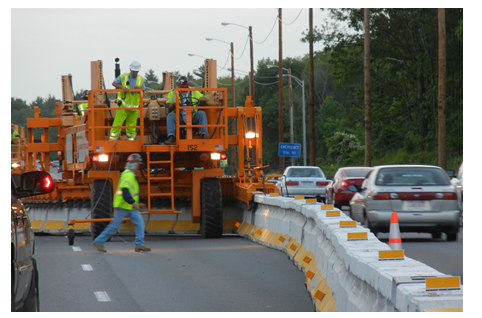
slide notes:
None.
slide 64: Sky Eye View of Barrier
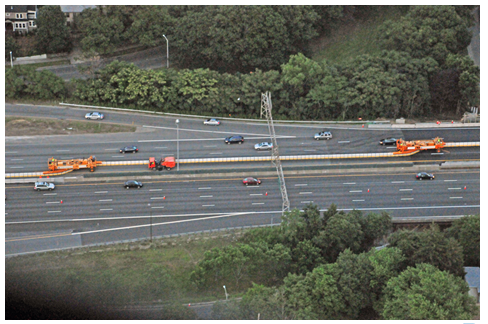
slide notes:
None.
slide 65: Northbound Exodus
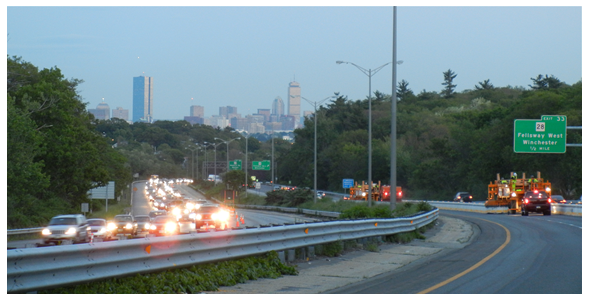
slide notes:
Intelligent Work Zone System will provide current info regarding work zone delays via PCMSs. These signs will be strategically placed so that road users can make informed decisions about which road to take.
Sequence Construction to Minimize Traffic: Make sure to mention that we are only going to close one local road per weekend. This will reduce impacts on local and regional roads.
slide 66: Dedicated Work Area Protection
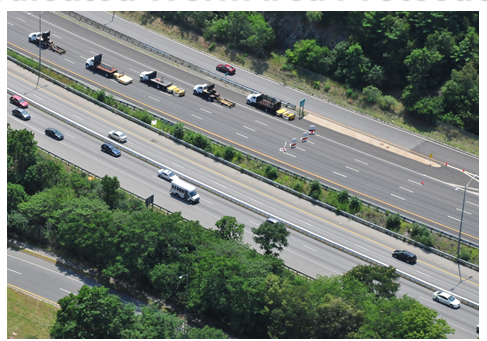
slide notes:
What are the operational benefits of ABC?
slide 67: Early Start on Demo
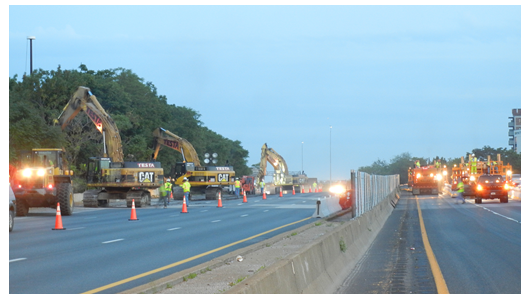
slide notes:
Lane taking begins at 8:00 PM. Weeknight work can involve lane closures, as presently occurs.
slide 68: View of Early-Start Demolition
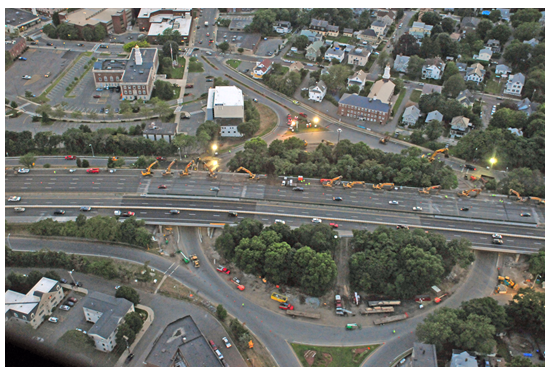
slide notes:
None.
slide 69: Truck Convoy Mobilization
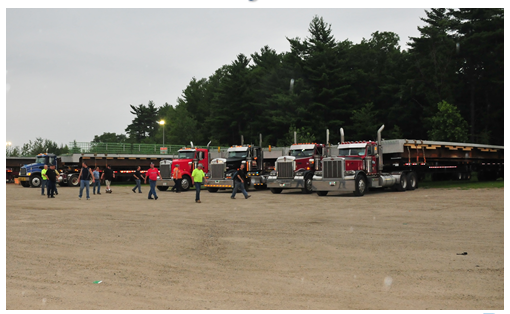
slide notes:
None.
slide 70: Deck Panels on the Move
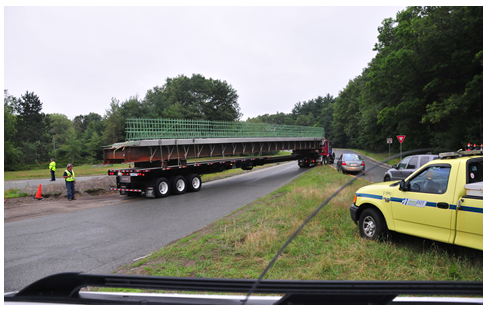
slide notes:
None.
slide 71: Parade of Sail
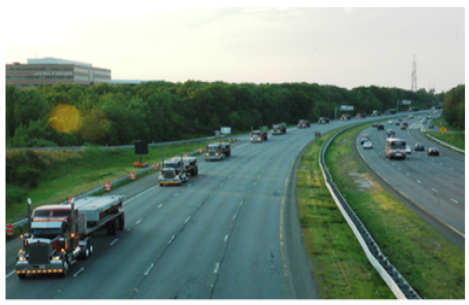
slide notes:
None.
slide 72: Release the Hounds
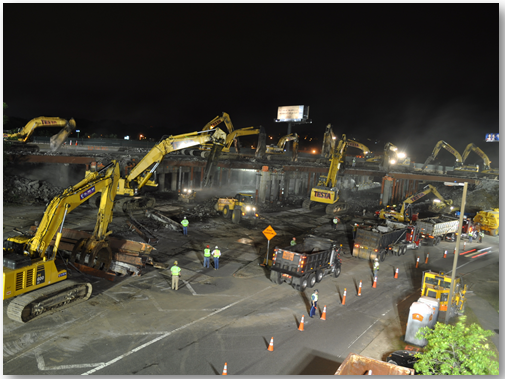
slide notes:
None.
slide 73: The Morning After
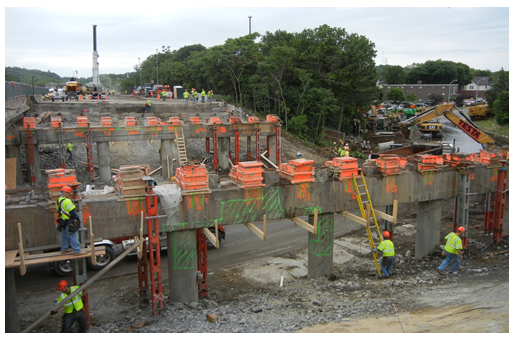
slide notes:
None.
slide 74: Counter-Flow Operation

slide notes:
Any specifics on traffic operation strategies and demand management strategies to minimize traffic impacts .
slide 75
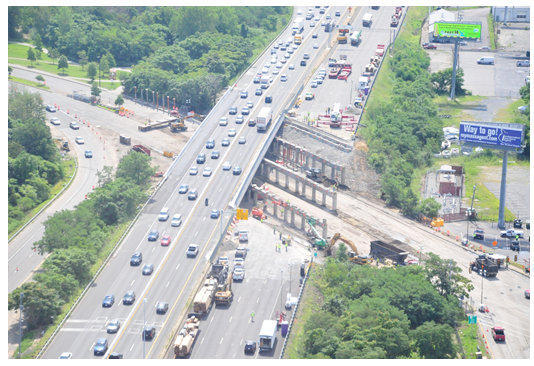
slide notes:
None.
slide 76: Modular Unit Erection
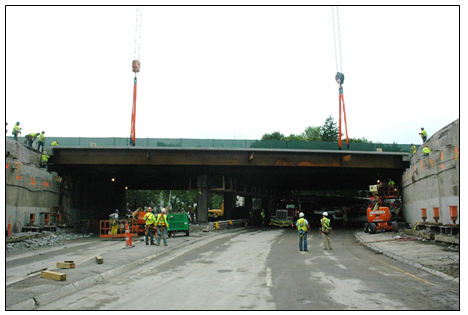
slide notes:
None.
slide 77: Modular Unit Erection Cont.
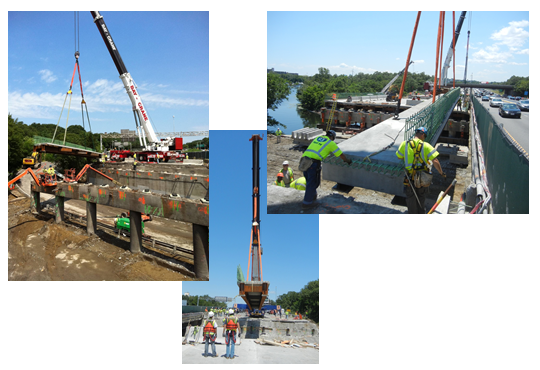
slide notes:
None.
slide 78: Forming, Reinforcement Installation
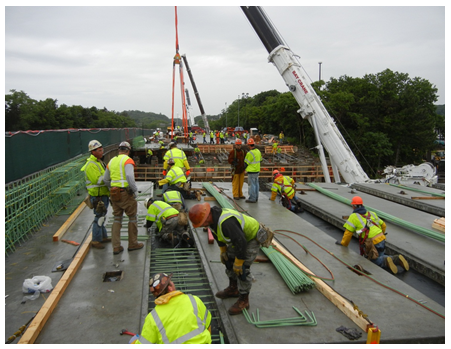
slide notes:
None.
slide 79: Forming, Dowel Bar Splicers
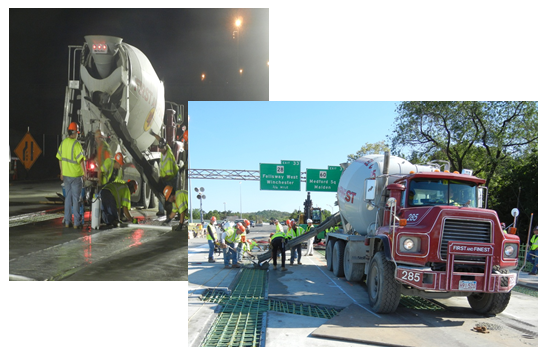
slide notes:
None.
slide 80: Approach Work/Cleanup
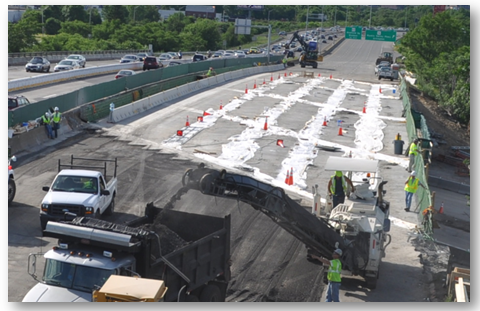
slide notes:
None.
slide 81: RTTM System
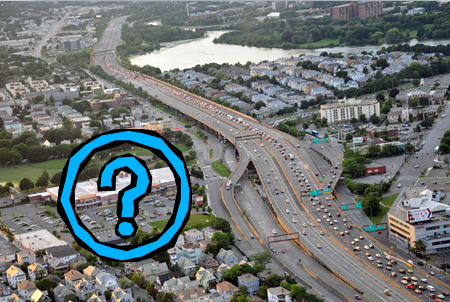
slide notes:
Questions?
Return to List of Presentations